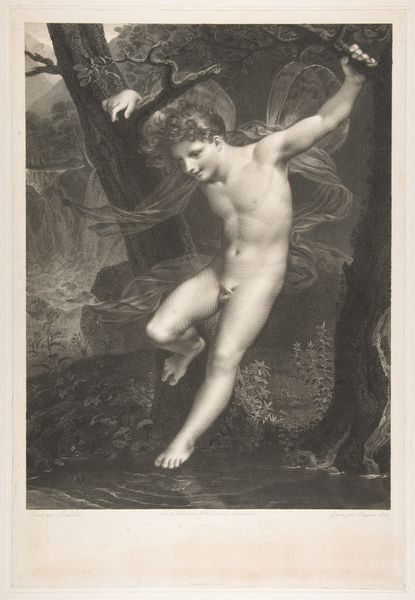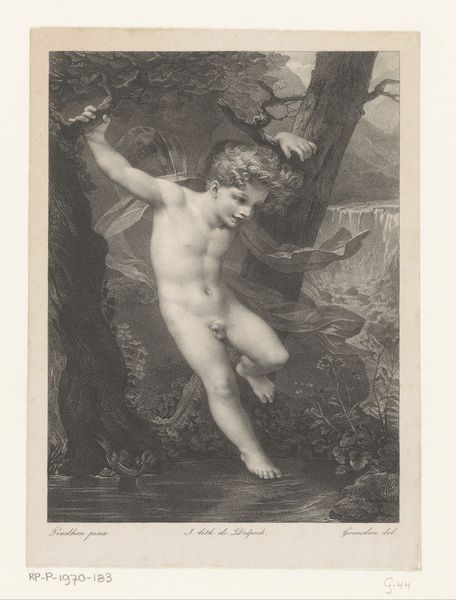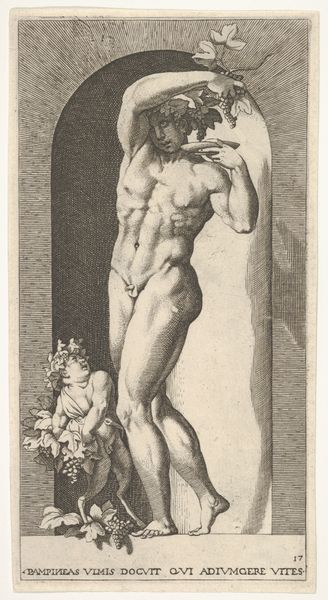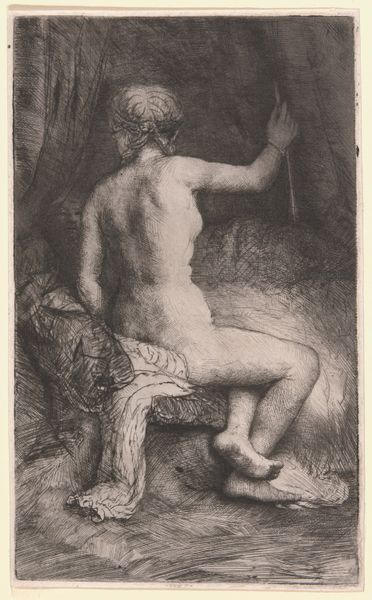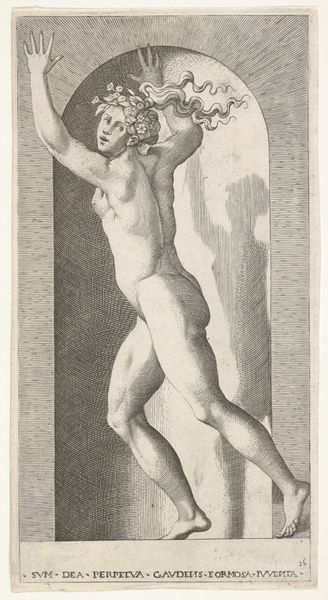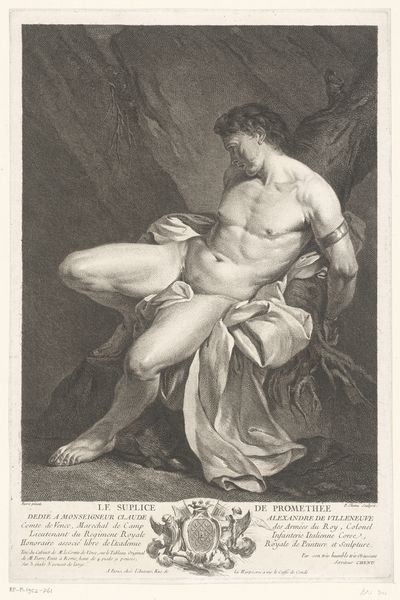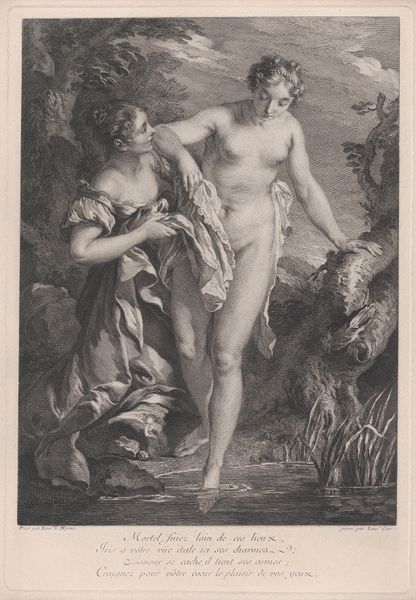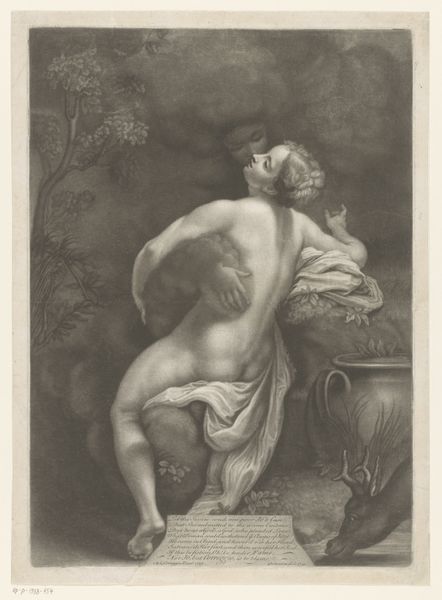
print, engraving
# print
#
landscape
#
charcoal drawing
#
figuration
#
romanticism
#
history-painting
#
nude
#
engraving
Dimensions: height 582 mm, width 345 mm
Copyright: Rijks Museum: Open Domain
Editor: This is an engraving titled "Narcissus aan de waterkant" – or Narcissus at the waterside – created around 1820 by Pieter Jan de Vlamynck. There's a quiet stillness to it; a lone figure contemplates his reflection. How would you interpret this work within its historical context? Curator: Given its time, the Romantic era, it’s impossible to ignore how the image engages with broader cultural anxieties. The myth of Narcissus was hugely popular. The French title also offers context. Do you think it's simply about vanity, or could it represent something more? Think about the social climate in post-revolutionary Europe. Editor: Well, the French inscription at the bottom makes me think it's related to a powerful figure. Narcissus, a single beautiful man admiring his reflection? Is it saying something about post-revolution leadership? Curator: Precisely. Romanticism, though focused on individualism and emotion, often critiqued power. Notice how vulnerable Narcissus is posed, despite his implied status. The myth critiques both the leader's self-absorption and his isolation from his public. This print could serve as a caution against unchecked power and narcissism among public figures, resonating with concerns about leadership after the French Revolution. The inclusion of his dog further prompts the reading that those that would usually adore such men have deserted him in death or quiet defeat. It could also show who is watching and taking note of mistakes in leaders and leadership roles. Do you think the public at that time could read those critiques too? Editor: It's fascinating how a classical myth, rendered through Romantic sensibilities, could act as social commentary. I definitely missed that before! Thanks, that makes me view the art very differently. Curator: My pleasure. History offers many hidden angles, right?
Comments
No comments
Be the first to comment and join the conversation on the ultimate creative platform.
